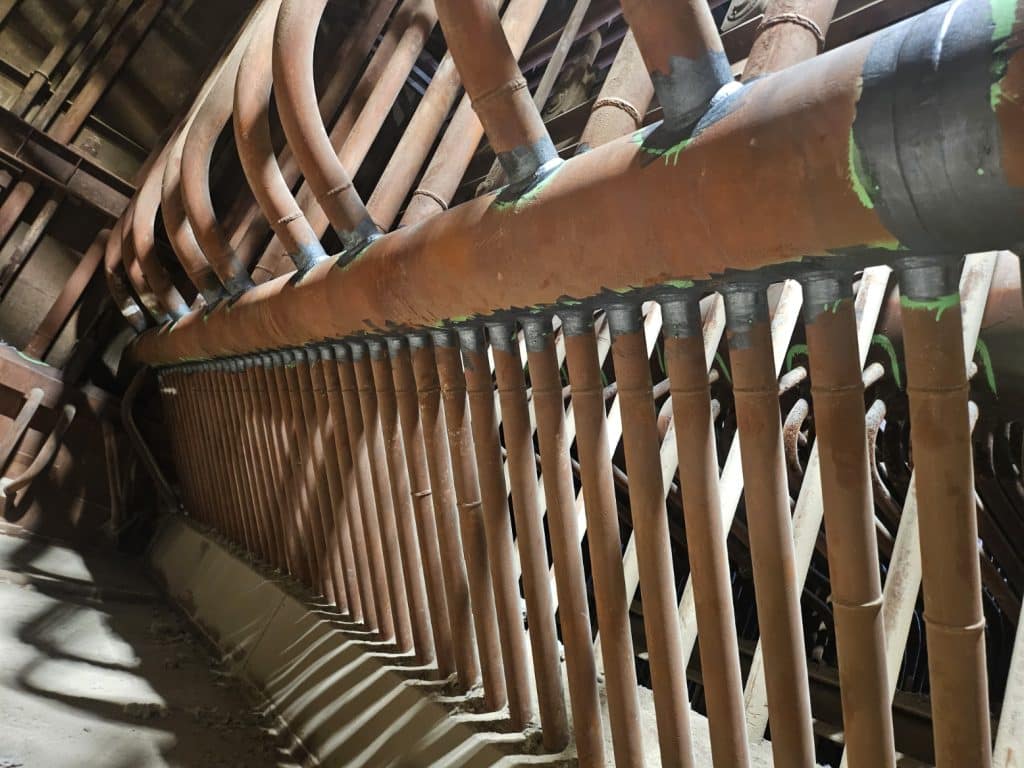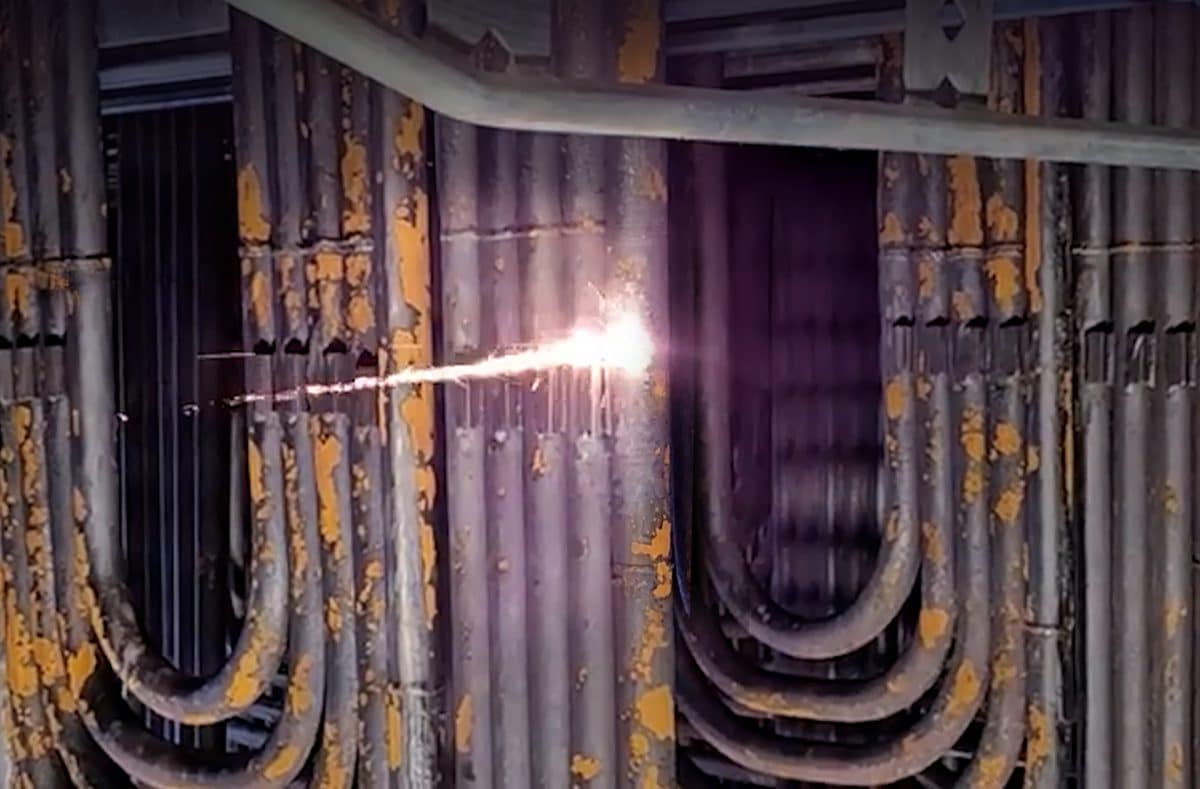Laser Cleaning is emerging as an important tool for undertaking many industrial cleaning operations, offering speed, minimal damage to substrate materials, improved defect visibility and inspection reliability, and faster cleanups.
During the scheduled March–April 2024 shutdown at NRG Power Station at Gladstone Queensland, Renteca deployed advanced laser cleaning technology across three key areas: boiler furnace tubes, penthouse piping, and the deaerator vessel.
More than 1,000 welds were successfully cleaned—removing coatings, corrosion, and scale to enable precise Non-Destructive Testing (NDT).
By employing three customised Denaliweld 2000-watt laser units with extended cleaning heads, Renteca overcame common site constraints such as confined space entry and limited accessibility.
This not only accelerated the project schedule but also set a new benchmark for precision and safety in boiler tube maintenance.

Why clean boiler tubes?
Boiler furnace tubes in power stations operate under extreme thermal and pressure conditions.
At the Gladstone Power Station, steam temperatures reach 540 degrees C and reach pressures of 16,890 kilopascals (2,400 psi). Tubes operating at such extreme limits need to be regularly inspected to ensure continued structural integrity.
Over time, they accumulate:
- Scale (oxide layers from combustion by-products)
- Corrosion
- Surface coatings or residues from prior treatments
These deposits significantly impair heat transfer efficiency, reducing thermal output and increasing fuel costs.
More critically, they obscure surface defects and cracks, complicating or invalidating NDT inspections. Effective cleaning is not optional—it’s essential for reliable operation and safety compliance.
Comparing cleaning methods: laser vs. abrasive blasting
1. Substrate integrity
Abrasive blasting can damage surfaces through micro-pitting or excessive roughness, while laser cleaning avoids substrate damage by targeting only surface contaminants. The laser beam reflects off the base metal, stopping the ablation process automatically.
2. Contaminant control
Blasting releases large volumes of airborne particulate, posing respiratory and visibility risks. Laser cleaning generates negligible airborne contaminants and no grit, improving site safety and cleanliness—particularly in scaffolded areas.
3. Cleanup and downtime
Blasting methods require post-cleaning vacuuming and flushing. Laser systems require no consumables, dramatically reducing cleanup tasks and improving turnaround time during shutdowns.
4. Environmental impact
Abrasive media must be disposed of as waste, often under hazardous material guidelines. Laser cleaning is a zero-consumable process, producing minimal waste and reducing environmental footprint.
5. Accessibility
Laser units with extended heads, such as those used by Renteca, can access confined boiler areas without dismantling adjacent components—unlike blasting equipment that needs clear space for hoses and recovery systems.
Laser cleaning modalities: tailoring the process
Renteca offers both Continuous Wave (CW) and Pulsed Wave laser cleaning systems:
- CW Lasers – Ideal for large surface areas—high throughput with higher thermal input.
- Pulsed Lasers – Suited for precision cleaning where control and surface finish are critical.
These systems can be tuned for optimal performance based on material, geometry, and desired result—ensuring safe, controlled, and effective cleaning.
Safety first: Built-in engineering controls
Renteca’s Class 4 laser systems meet AS/NZS IEC 60825.1:2011 safety standards and include:
- Interlocked helmets and protective eyewear
- Laser barriers and curtains
- Automated emergency stops and shutdown systems
- Certified laser safety officers and third party-trained operators
These controls ensure laser operations are conducted with the highest levels of safety and compliance.

The bottom line for shutdown planners and contractors
Laser cleaning provides:
- Faster readiness for NDT
- Minimal post-cleanup requirements
- Improved jobsite safety
- Better defect visibility and inspection reliability
- Environmentally sustainable outcomes
For project planners and contractors, the shift to laser cleaning means cleaner workspaces, faster turnarounds, and fewer safety risks.

Denaliweld™ laser welding and cleaning
Renteca selected the DenaliWeld Jet 2kW Laser Welder power unit for the NRG boiler tube clean.
These are rugged industrial units suited to shut down environments.
Manufactured in Chicago USA, Denaliweld laser equipment is setting a new standard for performance and reliability.
Conclusion
The NRG Power Station shutdown demonstrates the operational and safety advantages of laser cleaning over traditional methods. As expectations for safety, efficiency, and precision grow in the power generation sector, laser cleaning is not just an alternative—it’s the new industry standard.
Renteca delivers turnkey laser cleaning solutions that are faster, cleaner, and smarter.
For more information or to discuss your next shutdown project:
Contact the Renteca Technical Services team: call 1800 Renteca.
